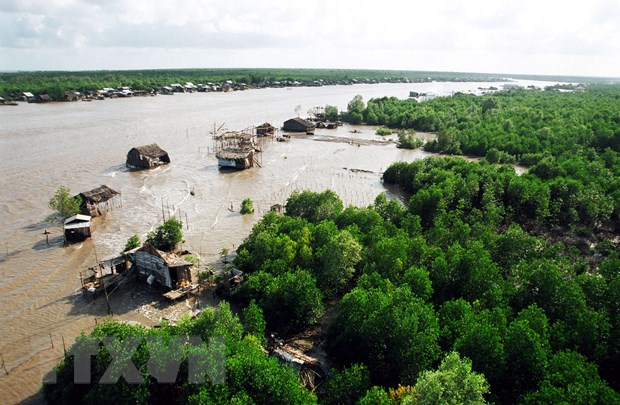 Society
Society

 |
Mangrove forests in Cà Mau Province. The province is expanding the breeding of shrimp in mangrove forests to increase the incomes of farming households and better protect the forests. — VNA/VNS Photo Huỳnh Lâm
CÀ MAU — The Cửu Long (Mekong) Delta province of Cà Mau is expanding shrimp – forest farming as it offers sustainable income, helps protect forests and meets shrimp export quality requirements.
The country’s largest shrimp producing province has vast mangrove forests that offer ideal conditions for breeding aquatic species, especially shrimp.
It has been allotting forests for companies and households to protect and exploit, paying them VNĐ250,000 - 500,000 per hectare per year for the protection, according to its Department of Agriculture and Rural Development.
Many of them also breed shrimp, crab, fish, and other aquatic species in the forests to earn an additional income.
The province also has the largest mangrove forest area in the country.
It has 80,000ha of shrimp - forest farming, including 19,000ha with international quality certification such as GlobalGAP, Global Aquaculture Stewardship Council (ASC) and Best Aquaculture Practices (BAP), according to the department.
Phan Hoàng Vũ, director of the department, said shrimp - forest is a natural farming model that does not involve the use of chemicals or drugs and offers an income of VNĐ80 million (US$3,400) per hectare per year.
The province’s seafood companies in co-operation with forest management units and local households have implemented various shrimp - forest farming projects in coastal areas.
Tăng Kim Ngân has a contract with a company to carry on shrimp - forest farming in Ngọc Hiển District’s Rạch Gốc Town, and he said his entire output is purchased at prices 5 – 10 per cent higher than those of shrimps farmed using other methods.
Ngọc Hiển District is a peninsula with the sea on three sides, large mangrove forests and three major shrimp – forest farming communes, Viên An Đông, Viên An and Đất Mũi.
Viên An Đông has 500 households farming based on international quality standards.
Nguyễn Thành Cao of the district’s Tắc Biển Hamlet said: “[These] households … can sell their shrimp at VNĐ5,000 - 10,000 per kilogramme higher than shrimp bred using other farming methods.”
The province is training more and more farmers in shrimp - forest farming to help adapt to climate change.
It solicits investment, especially from seafood processing companies, to expand the model.
But it also has other models like shrimp – rice farming and industrial and semi-industrial farming adding up to more than 278,000ha.
Its output last year was 205,290 tonnes.
Shrimp accounted for 80 per cent of its exports of seafood and 49 per cent of agricultural items last year. — VNS




